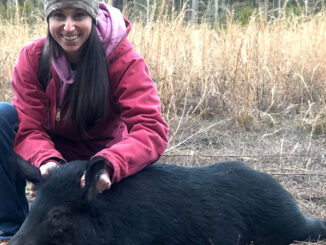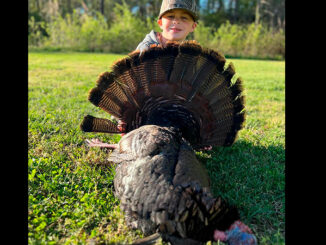
Diving birds give away location of blue cats
Guide Rodger Taylor thinks in reverse during the winter to catch big blue Lake Wylie catfish.
Most fishermen work the shallows in the morning, then move deeper as the sun gets well up in the sky. Taylor, who operates Catfish ON Guide Service, said it’s just the reverse at Wylie, on the North Carolina-South Carolina border.
“In the morning, the coldest water — often in the mid-40s — is in the shallows, while the warmer water is 25 to 40 feet deep,” he said. “Later, the reverse is true. When the sun comes up and warms the shallows, I’ll catch blue cats bottom-fishing in 2 to 5 feet of water.”

Taylor starts his morning search by looking for diving birds. This indicates forage being driven to the surface by predators. Blue cats will be feeding upon the scraps left behind by other fish. Taylor motors to the area and checks his sonar for baitfish and cats along flats, channel ledges and points.
Once he finds a good area, Taylor drifts, moving along in 20 to 30 feet of water. The Rock Hill, S.C. angler sets out six medium-action Shakespeare Ugly Stik rods mated with Ambassadeur 6500 reels spooled with 20-pound monofilament. He employs Santee rigs with 30-inch, 50-pound monofilament leaders tied to barrel swivels, with an in-line float 6 to 12 inches from the No. 6/0 to 8/0 circle hooks. He uses a specially made, 1-ounce sleeve sinker filled with buckshot as a weight. And hhe favors freshly cut, 4- to 6-inch gizzard shad. If need be, he uses a drift sock.
Slow down when drifting for winter cats
“In the winter, it’s important to drift slowly, usually one-half mile per hour or less, because fish are not that active” he said. “I’ll use a drift sock to slow down if it’s windy.”
Once the sun warms the shallows and Taylor locates fish, he’ll anchor in the shallows, setting out 8 to 10 light-action Shakespeare Tiger rods around his boat in spider fashion for bottom fishing. He said current improves the bite while water color isn’t much of a factor.
“I fish the lower end of the lake where it’s difficult to detect any current, but it’s a plus if the lake is being pulled,” he said. “Water color, on the other hand, doesn’t affect blue cats. If they’re there, they’ll bite.”
Taylor’s winter fishing grounds include Crowder and Big Allison creeks and the main-river channel.



